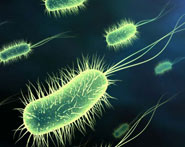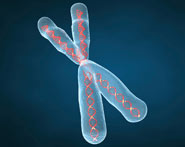


 النبات
النبات
 الحيوان
الحيوان
 الأحياء المجهرية
الأحياء المجهرية
 علم الأمراض
علم الأمراض
 التقانة الإحيائية
التقانة الإحيائية
 التقنية الحيوية المكروبية
التقنية الحيوية المكروبية
 التقنية الحياتية النانوية
التقنية الحياتية النانوية
 علم الأجنة
علم الأجنة
 الأحياء الجزيئي
الأحياء الجزيئي
 علم وظائف الأعضاء
علم وظائف الأعضاء
 الغدد
الغدد
 المضادات الحيوية
المضادات الحيوية|
Read More
Date: 2025-03-30
Date: 9-3-2016
Date: 14-3-2016
|
An estimated 1.2 million people are sickened each year by Salmonella. Salmonella-contaminated foods that have been linked with illness in humans are undercooked eggs and poultry, raw meats, dairy products, sauces and salad dressings, cake mixes, cream-filled desserts, peanut butter, and chocolate.
In 2009, the U.S. Food and Drug Administration (FDA) issued a massive recall of peanut products nationwide that had been produced by the Peanut Corporation of America (PCA). FDA inspectors cited as evidence “test results from consumer samples that match the outbreak strain of Salmonella Typhimurium, and FDA positive samples of finished product (post-processed peanut meal collected at the PCA Texas facility) that match the outbreak strain.” The consumer samples had been identified by clinical microbiology laboratories as people visited their doctors at the height of the outbreak. FDA microbiologists, then, used a technology called DNA finger printing. Sensitive techniques for matching the base sequences of deoxyribonucleic acid (DNA) of a clinical isolate from a patient to bacteria from a suspected source can identify the original source of contamination. This technology works for food-borne pathogens in addition to Salmonella.
The 2009 outbreak resembled the classic signs of Salmonella outbreak. Illness symptoms began six hours to four days after ingesting contaminated food, and most people had symptoms nine to 48 hours after ingestion. As few as 15 Salmonella cells in food can cause illness, but some people withstand doses up to 1,000 cells before becoming sick. Illness includes nausea, vomiting, abdominal cramps, fever, headache, and diarrhea, which last for one to four days. Because these symptoms relate to many food borne illnesses, public health officials have a difficult time confirming a Salmonella outbreak without serology testing on patient stool samples by a clinical microbiology laboratory. Laboratory culture methods take four to five days, and this delay presents a problem when an outbreak is under way and health agencies need to give the public advice. Many small outbreaks of Salmonella occur and disappear before ever being diagnosed.
The amount of pathogens needed to make someone sick depends on the health condition of a person and susceptibility to infection. All adults and children are susceptible to Salmonella, but people who have weakened immune systems have the highest risk of infection. Salmonella causes inflammation of the small intestine when the bacteria penetrate the epithelial lining. Some strains produce a toxin called an endotoxin, which stays attached to the bacterial outer membrane and releases into the epithelium only after the bacterium dies and lyses. Most laboratory studies that have been done on bacterial endotoxins have used Escherichia coli and Salmonella. The Salmonella endotoxin is a lipopolysaccharide (LPS), which is a sugar polymer with several fatty acids attached. The LPS contains three portions: (1) R polysaccharide, (2) O polysaccharide, and (3) lipid A, which is the toxic portion of the LPS.
During infection, the O polysaccharide adheres to the epithelium and introduces lipid A into the host cell. The O polysaccharide, also called the O-antigen, repels various actions by the immune system by resisting phagocytosis and the action of antibodies and complement. Phagocytosis is a nonspecific defense mechanism of hosts, by which an immune cell engulfs and digests the pathogen. Antibodies and complement carry out more pathogen-specific actions in immunity.
If Salmonella cells enter the bloodstream, they trigger a dramatic immune response, resulting in release of cytokines and nitric acid by the body. Both substances lead to a condition called endotoxic shock or septic shock. Sepsis is the contamination of the bloodstream or internal organs with pathogens. This severe condition causes lowered blood pressure, rapid heart rate, shortness of breath, and possible disorientation.
The Los Angeles Times reporter Joel Rubin contracted salmonellosis, in 2007, at the same time a major Salmonella outbreak had hit Los Angeles. Rubin said, “My eyes popped open sometime after midnight and I knew I was in trouble. This was not a typical bellyache. It radiated from my gut. . . . Beads of sweat rose suddenly on my forehead. A sharp chill hit me. My teeth chattered, my body shuddered. . . . I couldn’t have known it at the time, but in those early Monday morning hours, dozens of other people across Los Angeles were suffering just like I was. By sunrise, some of us would wind up in hospital emergency rooms. We were men and women, old and young, linked only by our unfortunate decision to eat a certain meal at a certain place at a certain time. An outbreak had begun.” Los Angeles County health officials spent considerable energy tracing the outbreak to eggs that had been used in traditional hollandaise sauce, that is, sauce made by using raw eggs.
Although most cases of salmonellosis cause some uncomfortable days, the illness is usually not fatal.
An estimated 1.2 million people are sickened each year by Salmonella. Salmonella-contaminated foods that have been linked with illness in humans are undercooked eggs and poultry, raw meats, dairy products, sauces and salad dressings, cake mixes, cream-filled desserts, peanut butter, and chocolate.
In 2009, the U.S. Food and Drug Administration (FDA) issued a massive recall of peanut products nationwide that had been produced by the Peanut Corporation of America (PCA). FDA inspectors cited as evidence “test results from consumer samples that match the outbreak strain of Salmonella Typhimurium, and FDA positive samples of finished product (post-processed peanut meal collected at the PCA Texas facility) that match the outbreak strain.” The consumer samples had been identified by clinical microbiology laboratories as people visited their doctors at the height of the outbreak. FDA microbiologists, then, used a technology called DNA finger printing. Sensitive techniques for matching the base sequences of deoxyribonucleic acid (DNA) of a clinical isolate from a patient to bacteria from a suspected source can identify the original source of contamination. This technology works for food-borne pathogens in addition to Salmonella.
The 2009 outbreak resembled the classic signs of Salmonella outbreak. Illness symptoms began six hours to four days after ingesting contaminated food, and most people had symptoms nine to 48 hours after ingestion. As few as 15 Salmonella cells in food can cause illness, but some people withstand doses up to 1,000 cells before becoming sick. Illness includes nausea, vomiting, abdominal cramps, fever, headache, and diarrhea, which last for one to four days. Because these symptoms relate to many food borne illnesses, public health officials have a difficult time confirming a Salmonella outbreak without serology testing on patient stool samples by a clinical microbiology laboratory. Laboratory culture methods take four to five days, and this delay presents a problem when an outbreak is under way and health agencies need to give the public advice. Many small outbreaks of Salmonella occur and disappear before ever being diagnosed.
The amount of pathogens needed to make someone sick depends on the health condition of a person and susceptibility to infection. All adults and children are susceptible to Salmonella, but people who have weakened immune systems have the highest risk of infection. Salmonella causes inflammation of the small intestine when the bacteria penetrate the epithelial lining. Some strains produce a toxin called an endotoxin, which stays attached to the bacterial outer membrane and releases into the epithelium only after the bacterium dies and lyses. Most laboratory studies that have been done on bacterial endotoxins have used Escherichia coli and Salmonella. The Salmonella endotoxin is a lipopolysaccharide (LPS), which is a sugar polymer with several fatty acids attached. The LPS contains three portions: (1) R polysaccharide, (2) O polysaccharide, and (3) lipid A, which is the toxic portion of the LPS.
During infection, the O polysaccharide adheres to the epithelium and introduces lipid A into the host cell. The O polysaccharide, also called the O-antigen, repels various actions by the immune system by resisting phagocytosis and the action of antibodies and complement. Phagocytosis is a nonspecific defense mechanism of hosts, by which an immune cell engulfs and digests the pathogen. Antibodies and complement carry out more pathogen-specific actions in immunity.
If Salmonella cells enter the bloodstream, they trigger a dramatic immune response, resulting in release of cytokines and nitric acid by the body. Both substances lead to a condition called endotoxic shock or septic shock. Sepsis is the contamination of the bloodstream or internal organs with pathogens. This severe condition causes lowered blood pressure, rapid heart rate, shortness of breath, and possible disorientation.
The Los Angeles Times reporter Joel Rubin contracted salmonellosis, in 2007, at the same time a major Salmonella outbreak had hit Los Angeles. Rubin said, “My eyes popped open sometime after midnight and I knew I was in trouble. This was not a typical bellyache. It radiated from my gut. . . . Beads of sweat rose suddenly on my forehead. A sharp chill hit me. My teeth chattered, my body shuddered. . . . I couldn’t have known it at the time, but in those early Monday morning hours, dozens of other people across Los Angeles were suffering just like I was. By sunrise, some of us would wind up in hospital emergency rooms. We were men and women, old and young, linked only by our unfortunate decision to eat a certain meal at a certain place at a certain time. An outbreak had begun.” Los Angeles County health officials spent considerable energy tracing the outbreak to eggs that had been used in traditional hollandaise sauce, that is, sauce made by using raw eggs.
Although most cases of salmonellosis cause some uncomfortable days, the illness is usually not fatal.



|
|
|
|
التوتر والسرطان.. علماء يحذرون من "صلة خطيرة"
|
|
|
|
|
|
|
مرآة السيارة: مدى دقة عكسها للصورة الصحيحة
|
|
|
|
|
|
|
نحو شراكة وطنية متكاملة.. الأمين العام للعتبة الحسينية يبحث مع وكيل وزارة الخارجية آفاق التعاون المؤسسي
|
|
|